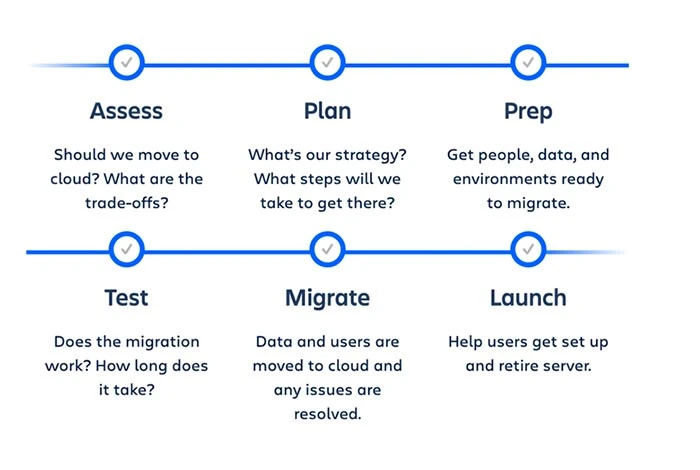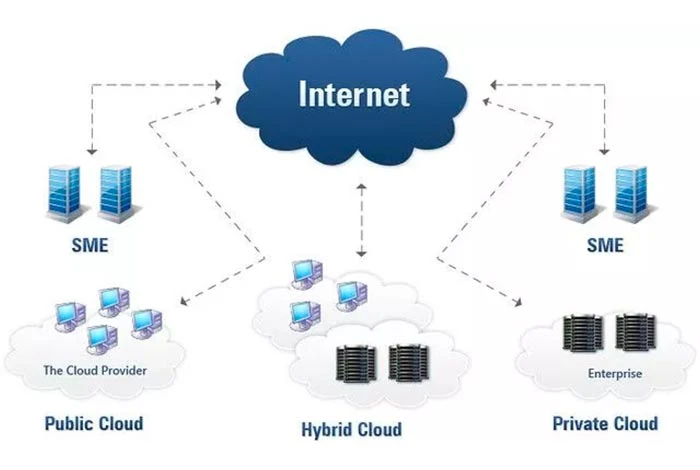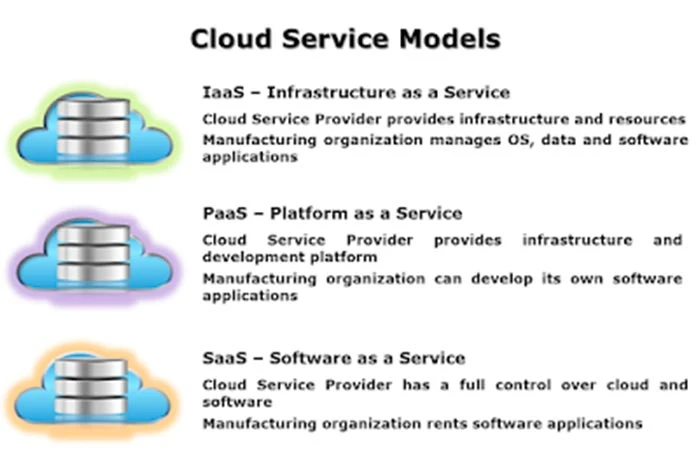Summary: Cloud migration has made it easier for businesses to optimize and manage their entire IT infrastructure in real-time via a single database. What are the different cloud migration strategies you can adopt for this purpose? Find out about these strategies in the article.
Cloud migration has transformed the way businesses handle their operations. With cloud technology, they have been able to digitize their IT infrastructure and manage business operations directly through cloud.
Most businesses shift their data and applications from the data center to the cloud-based environment to reduce their operating costs, simplify the IT management, modernize and optimize them, and so on.
Cloud migration is not restricted to moving the IT infrastructure to cloud, it is also about constantly optimizing applications for improved operational efficiency and boosting their performance. In this article, you will learn more about cloud migration, types of cloud migration models, its procedures, and much more.
What is Cloud Migration?

Cloud migration is the process of moving a company’s database, IT resources, applications, etc., either partially or entirely into the cloud environment. Cloud migration is also about moving infrastructure from the existing cloud service to the new cloud environment.
By migrating all the workloads to the cloud, organizations can optimize their IT resources in real-time, keep their data secure, reduce IT resources maintenance costs, etc. It can also quickly transfer data between different cloud environments effortlessly.
Benefits of On Premise to Cloud Migration?
Moving your on-premises workload to the cloud-based infrastructure can benefit an organization in multiple ways such as –
- It helps in reducing the IT maintenance and labor costs.
- Cloud migration enables businesses to manage their entire workload from a single infrastructure than keeping it scattered across multiple systems and servers.
- It provides the flexibility to view businesses databases from anywhere in real-time.
- Cloud migration helps in quickly modernizing and optimizing the applications unlike separately updating each application in on-premises infrastructure.
- Users can keep their data secure and free from data breaches through various security protocols.
- It provides data backup and recovery features to easily transfer data between different cloud solutions.
How Does Cloud Migration Process Work?

Cloud migration work in the following steps:
- Step 1: Cloud Migration Strategy
You need to create a cloud migration strategy for a successful cloud migration. This will include the type of applications that need to be moved, the type of cloud environment, and the design of the cloud infrastructure. Therefore, the decision to choose the right applications would depend on which of them would improve ROI in the future.
- Step 2: Discovery and Assessment
The assessment of all the data and applications before the migration is important to learn about their dependencies and how they will behave in the new cloud environment. Pre-migration assessment can help in understanding your infrastructure, so that you can create the most appropriate cloud environment for your business.
With dependency mapping and risk assessment of applications based on the current usage, businesses can easily learn the risk and benefits of migrating database to cloud.
- Step 3: Migration
In this step, modernizing and optimizing of the existing applications is required to suit the new cloud environment, or transforming the existing cloud infrastructure to suit the application. The main purpose of this procedure is to create a whole new technology model to help businesses easily upgrade and optimize their IT resources.
Once the application and databases are optimized, they are moved to the cloud-based infrastructure through cloud migration tools.
Cloud Migration Strategies That an Enterprise Can Adopt

There are different types of strategies to migrate on-premises and cloud workloads. You can choose from rehosting, re-platforming, or refactoring. Learn the complete details about each type of cloud migration below –
- Rehosting: In this type of migration, all applications, VMs, and data are directly migrated from the current environment to the cloud without any modification.
- Replatforming: Under this cloud migration strategy, the applications, VMs, and databases are modified and optimized to smoothly run on the current cloud-based environment without affecting its core infrastructure.
- Refactoring: In refactoring cloud migration, some components of the systems or applications are altered to suit the requirements of a new cloud environment.
- Retaining: Under this type of cloud migration, some components of the applications are changed, and some are retained on the company’s legacy system due to security concerns or compliance issues. This type of migration is called partial deployment.
- Retiring: Under this type of strategy, the business applications that are considered unfit for the new cloud environment are decommissioned.
- Rebuild: The rebuilding strategy could be defined as the way in which business applications are restructured from the ground through changing its base code with a new one.
- Replace: Under this strategy, existing business applications are completely replaced with SAAS applications through third-party vendors.
Suggested Read: Best Cloud Migration Tools | Best Cloud Security Tools
Cloud Migration Deployment Models and Which One Should You Adopt

Businesses can choose from different cloud deployment models, such as –
- Under the public cloud, multiple users can access cloud resources easily via internet connection.
- As per the private cloud model, cloud resources stay within a single data center and use the proprietary infrastructure.
- While following the hybrid cloud model, the data and resources stay in both public and private cloud.
- With multi-cloud model, users can either choose multiple public or private clouds from the different cloud vendors.
Common Challenges with Cloud Migration
Migrating to cloud-based infrastructure can provide endless benefits to the organization. However, shifting the entire workload to cloud may still be challenging for some businesses due to the following reasons:
- Takes a Lot of Time: Migrating the database becomes difficult because there is bulk of data migrating through the internet that sometimes crashes the server and takes a lot of time.
- Maintaining Data Integrity: Once all the data is transferred to the cloud-based infrastructure, another issue is to check and ensure that data remains intact and has not been compromised.
- Requires Additional Training: It might be challenging for businesses using on-premises infrastructure to shift to cloud-based infrastructure and might have to train their employees to adapt to the new technology.
- Difficult Interoperability: Interoperability becomes an issue as it becomes difficult to develop an appropriate communication between the current applications and the latest cloud environment.
Current Cloud Migration Trends
Some of the ongoing cloud migration trends include:
- Containerization Technology: The adoption of containerization technology in the cloud migration procedure will make it easier for businesses to deploy their applications in a cloud infrastructure. The container would include application source code, its dependencies, and related information. Thus, migrating the applications via containers can help in running applications on various cloud platforms without compromising the quality.
- Cloud-Native Applications: Creating and using cloud native applications makes the cloud migration easy as users need not restructure the application’s model. Therefore, functionalities like scalability, compatibility, and resilience are built within the applications. Thus, making the application deployment, optimization, and maintenance easier.
Points to Consider Before Migrating to Cloud
Cloud migration can free enterprises from the burden of maintaining and optimizing their IT resources. Consider these questions to understand whether your business is ready for cloud migration or not.
- Application Type: You need to decide whether legacy applications, or low latency workload, or security apps should remain on-premises or not.
- Migration Cost: What would be the cost of migrating to the workload be it partially or entirely.
- Cloud Model: Choose from which type of cloud model would be appropriate for your business. You can choose from public, private, hybrid, or multiple cloud models.
- Cloud Service Provider: The choice for the best cloud service provider would rely on the type of cloud model you need, or the application optimization and modernization feature you expect.
- Data Security: Businesses must consider the security regulations and policies of their industry before moving their workload to the cloud provider platform for data security.
What is the Right Time to Consider for Migration to Cloud?
Here are some of the situations where businesses should consider migrating their workload to the cloud:
- When business applications have become outdated and need to be optimized for better performance.
- When the business is unable to manage large amounts of data scattered in multiple servers and systems.
- When you want to expand your business globally and need to manage all your IT procedures remotely.
- When the business needs to improve the data security and want to prevent the data breaches.
What is Legacy Infrastructure?
In the IT industry, the legacy infrastructure is used to define the software and hardware which has become outdated but is still in use. The legacy infrastructure comprises servers, networking devices, applications, data, or any other software or hardware. These resources are not reliable and secure as today’s solutions. Hence, businesses still working with the legacy infrastructure might face data breaches due to outdated security reasons.
The legacy system might work slowly, become unreliable, or may not be supported by the original vendor. Thus, making the business procedure slow and increase the security breach risk as the vendor stops providing system upgrade.
Therefore, enterprises still relying on the legal infrastructure might not reap the benefits of cloud migration and may not be able to optimize their application, improve their data security, reduce IT maintenance costs, and so on.
Suggested Read: How to Migrate on AWS Cloud Services (AWS): Steps to Successful Cloud Journey?
What are the Cloud Service Models?

There are three different types of cloud service models, such as –
- Infrastructure as a Service (IaaS): Under Infrastructure as a service (IaaS), the essential services like computing, networking, and storage resources are available on demand based on the pay-as-you-go model. IaaS solutions provide the flexibility for scaling up the IT infrastructure.
- Platform as a Service (PaaS): Under PaaS cloud service delivery model, third-party cloud vendors provide both hardware and software tools for application hosting and development over the internet
- Software as a Service (SaaS): Under the SaaS cloud service model, applications are delivered as a service via the internet. Rather than installing and maintaining software, it can be accessed through the internet.
Related Categories: Cloud Management Service | Cloud Security Services | Cloud Analytics Solutions | Cloud Storage
FAQs
What are cloud migration services?
Cloud migration services are used to transfer and migrate an organization’s digital assets, databases, IT resources, applications, etc., either partially or completely over the cloud. Cloud migration services can also be used for cloud-to-cloud migration.
What are 7rs in cloud migration planning
The 7rs in the cloud migration planning refers to the refactor, replatform, repurchase, rehost, relocate, retain, and retire.
What are the benefits of cloud migration?
There are plenty of benefits of migrating the workload to the cloud-based infrastructure such as it reduces maintenance cost, improves data security, optimizes applications, and helps view data in real time. Further, it also helps organize data to meet the regulations and compliance.
What are the data migration risks in cloud computing?
Businesses achieve scalability and flexibility when they migrate their workload to the cloud. Despite that, there are a few risks with it like compromised security integrity, higher migration costs, prolonged migration procedure.
What are the challenges with cloud migration?
Some challenges that organizations might face with cloud migration include not having a proper cloud migration strategy, maintaining the data integrity, establishing a proper communication between the existing environment and the new cloud environment.
How cloud migration works?
Cloud migration works by assessing the databases, formulating the migration strategies, optimizing databases, and finally transferring them to a new cloud environment. Once the cloud migration gets completed, the apps can be easily optimized through a single software.
How long does cloud migration take?
The time taken for cloud migration depends on the type of workload that is being transported to the cloud. If it is a medium-scale migration, then it might take 3-4 months for complete migration. However, the time exceeds for large-scale migration.
How much does cloud migration cost?
The cost of the cloud migration would depend on the size of the migration project, organization type, number of IT resources, etc. However, on average, the cost ranges between INR 40k to 12 Lacs for a medium and big-scale project.
Why is cloud migration important?
Migrating the workload to the cloud-based infrastructure is important as it helps optimize business applications faster, manage multiple apps in real-time, and ensure better agility and flexibility.
Why do cloud migrations fail?
Cloud migration might fail in some cases due to the lack of proper planning. Businesses need to perform the pre-migration assessments for their databases and understand their dependencies to successfully create a cloud environment. Not being able to do that might make the cloud migration procedure unsuccessful.
What does the breath analysis look at in cloud migration?
The breadth analysis in cloud migration means to understand the basics of all the applications and databases along with their dependencies. It helps in figuring out what needs to be done when they will move into the cloud-based environment.
What are the types of cloud migration?
There are different types of cloud migration available for businesses such as rehosting, re-platforming, repurchasing, refactoring, retaining, retiring, etc. You can choose from any of these as per your migration requirements.
Varsha is an experienced content writer at Techjockey. She has been writing since 2021 and has covered several industries in her writing like fashion, technology, automobile, interior design, etc. Over the span of 1 year, she has written 100+ blogs focusing on security, finance, accounts, inventory, human resources,... Read more
















